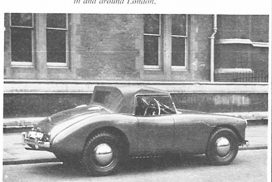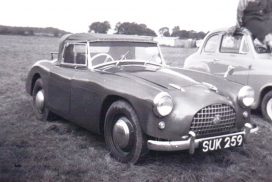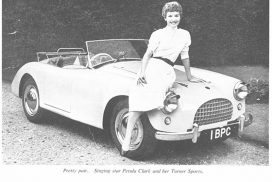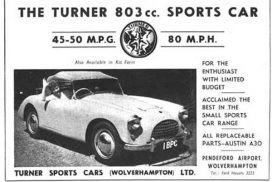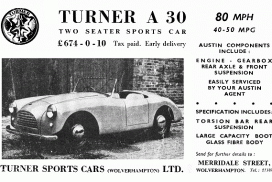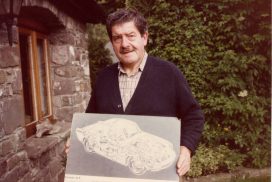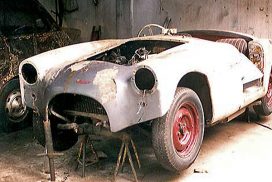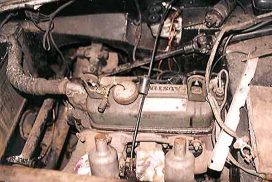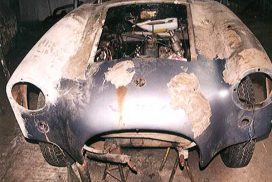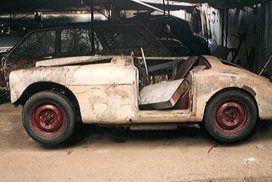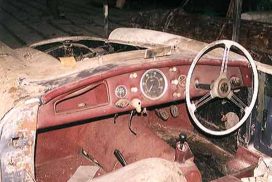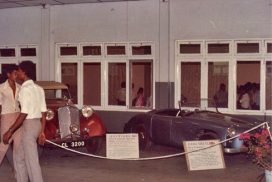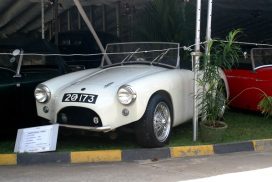Social media platforms bring out many interesting things. In this case, my interest in classic cars, drew me to a recent conversation on a Turner sports car restoration in Sri Lanka.
What was more interesting about the post was the fact that the car in question, a very rare two seater sports car made by Turner of UK, has been originally imported to Sri Lanka by none other than, Professor Earle De Fonseka (T. E. G De Fonseka). The car is so rare that only one example is found in the entire Asian continent, bar two imported to Japan.
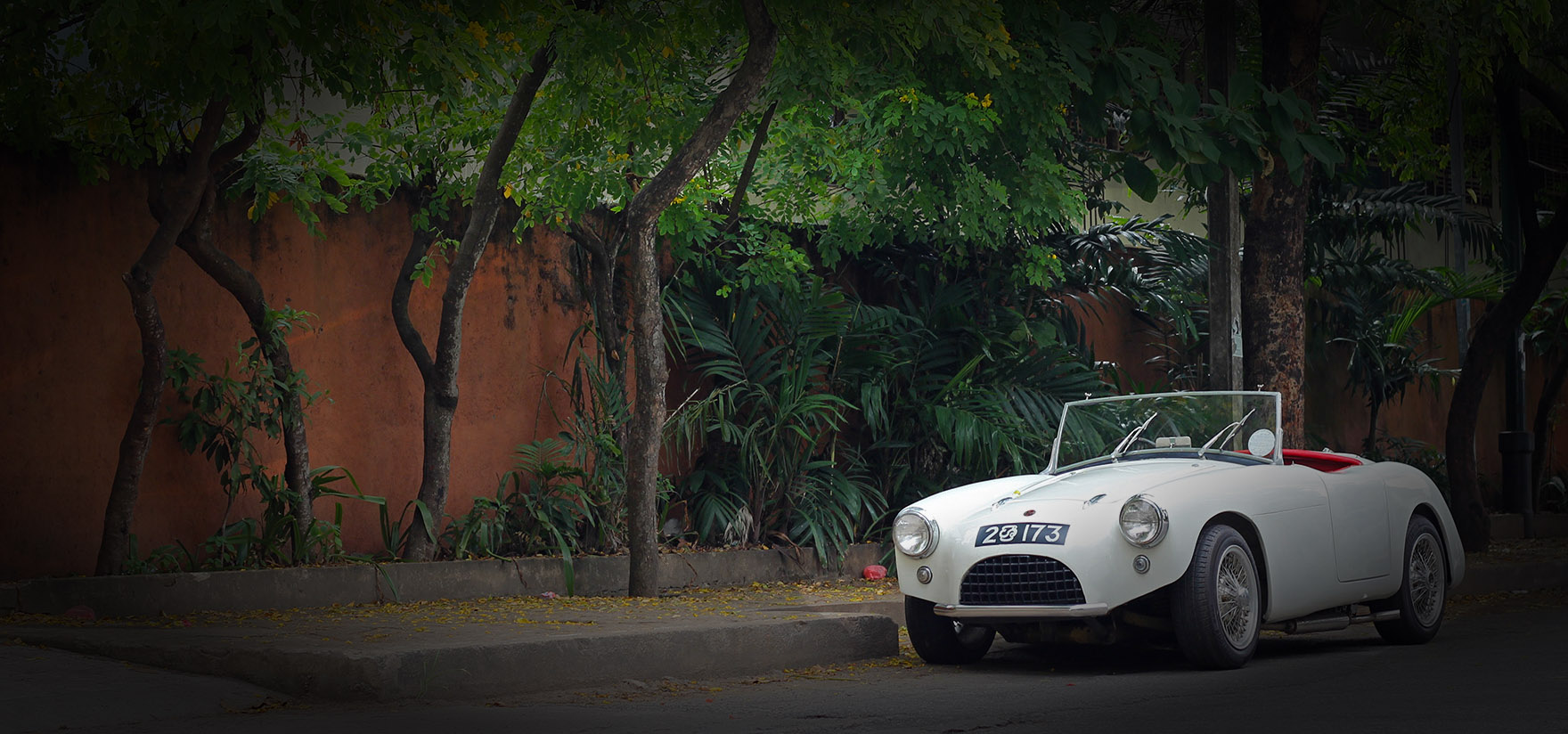
Earle De Fonseka, a former Professor of Public Health, was a founder member and conductor for several years of the Symphony Orchestra of Sri Lanka. He was the second of five children in the family of Dr Duncan de Fonseka of Elibank Road, Colombo. He completed his MBBS in 1948 and in 1953 became a lecturer in the Faculty of Medicine, University of Ceylon. Sometime later he went to Britain on study leave and took his PhD from the University of London in 1958.
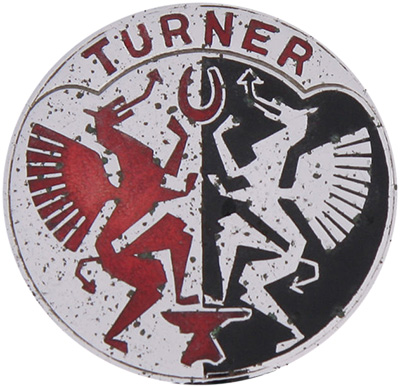 The Turner Sports Car Company Limited was a 1950s British sports car manufacturer, specializing in hand built cars based on Austin running gear. The car, a Turner 803 sports car with the new BMC 948 cc engine from the Austin A35, had been purchased brand new by Prof. Earle De Fonseka. This would have been in late 1955 or early 1956, the time this engine was introduced to the model, and aligns with the period he spent in the UK. The car has been personally collected from the factory in Wolverhampton, UK, and the keys of the car has been handed over by the founder, Jack Turner himself. This car, with chassis no 30/044, has been one of the earliest cars built by the company. A similar pink colored car has been purchased almost at the same time by the singer, Petula Clark. Almost a decade later in 1966, the company went into liquidation. How and why Prof. Earle decided on this little known marque remains a mystery. Probably the advertising material displayed below may give some clues. Turner specialised in building affordable and fast cars below 1000 cc, much below the engine capacities used in club racing. However this did not deter some from racing them, and Turner cars earned a reputation for ‘surprising’ some of the bigger names.
The Turner Sports Car Company Limited was a 1950s British sports car manufacturer, specializing in hand built cars based on Austin running gear. The car, a Turner 803 sports car with the new BMC 948 cc engine from the Austin A35, had been purchased brand new by Prof. Earle De Fonseka. This would have been in late 1955 or early 1956, the time this engine was introduced to the model, and aligns with the period he spent in the UK. The car has been personally collected from the factory in Wolverhampton, UK, and the keys of the car has been handed over by the founder, Jack Turner himself. This car, with chassis no 30/044, has been one of the earliest cars built by the company. A similar pink colored car has been purchased almost at the same time by the singer, Petula Clark. Almost a decade later in 1966, the company went into liquidation. How and why Prof. Earle decided on this little known marque remains a mystery. Probably the advertising material displayed below may give some clues. Turner specialised in building affordable and fast cars below 1000 cc, much below the engine capacities used in club racing. However this did not deter some from racing them, and Turner cars earned a reputation for ‘surprising’ some of the bigger names.
From the documentation listed by the current owner Naresha Supramaniam, the car has taken part in a rally for fiber bodied cars in the UK at Brands Hatch racing circuit and has been featured in a magazine article whilst in the UK (Sports Car and Lotus Owner Feb 1957). Fiber Reinforced Plastic (Fiberglass) use in sports cars was extremely rare at that time, and was a pioneering effort by Turner to use it in an affordable sports car. The material was to be used much later, on exclusive sports cars such as the Lotus Elite(1959) and Elan (1962). The car has also been entered in a race meet at Katukurunda on Nov 1958 by J. P. Obeysekera. The timing of this could indicate that he returned to the country with the car in tow, soon after he obtained his PHD in the UK. Many remember Prof. Earle and the Turner around Elibank Road. Earle who lived in a large house, later on sold the property and moved to a smaller house. Not much is heard of the car thereafter. Issues with the car may have made him keep it in the garage, and little by little that car lay abandoned and forgotten.
On his death in year 2000, the car became the property of his sister Carmel De Fonseka (Mrs. Raffael), and she sold the now abandoned car. The car was purchased by Naresha Supramaniam, a young classic car enthusiast. As shown in the pictures below, the car has been in storage for a very long time and was in a bad state of repair when acquired by him. Paint remover chemicals which has been mistakenly used on the fiberglass body panels, have further aggravated the situation, and it needed substantial repairs to its delicate FRP bodywork. Fortunately the car has been mechanically complete. After a sustained effort with the help of restoration expert Mr. Bri Ponnambalam, the present owner Naresha has lovingly and painstakingly restored the car to its former glory. The car which has originally been a deep blue, is now painted in off white, a popular factory color of that time. Also among his possessions is a photograph he received from the Turner Sports Car Registry UK, of Professor Earle picking up the car from the factory at Wolverhampton in UK. This photograph has been amongst a box full of memorabilia which was with Jack Turner, and passed on to the Turner Registry on his death in 2011.
Turner Cars
The first Turner models were produced between 1951 and 1966 by Turner Sports Car Company Limited. The first complete car was the Turner A30 Sports, a two-seater also known as the 803 using a 803 cc Austin A30 engine, transmission and suspension. The car featured a simple ladder frame chassis and open fiber glass two-seater sports bodywork. In 1956, the uprated 948 cc unit from the Austin A35 was adopted, and the model renamed Turner 950 Sports.
Approximately 70-80 of the A30 model and 170 of the A35 model has been made, and the majority exported mainly to the United States and South Africa. This car is one of the earliest known survivors. Approximately 670 Turner cars of all models have been made, of which there are 317 known survivors today. But only 21 cars of the model 803 is known to survive, this being the only car in the Asian region.
The man behind the cars and the company was Welsh engineer Jack Turner (1916-2011). Already established as a racing car specialist and race car builder, Jack Turner decided during 1954 to produce a simple, affordable, entry-level sports car. Turner Sports Cars were lightweight with a good power to weight ratio, and renowned for great handling, both on the road and the race track. While providing a lot of fun on the road, Turners excelled in Motor Sport and racing competition, and were known to “surprise” the better known cars such as Lotus, MG and Healey both on the race track and the road.
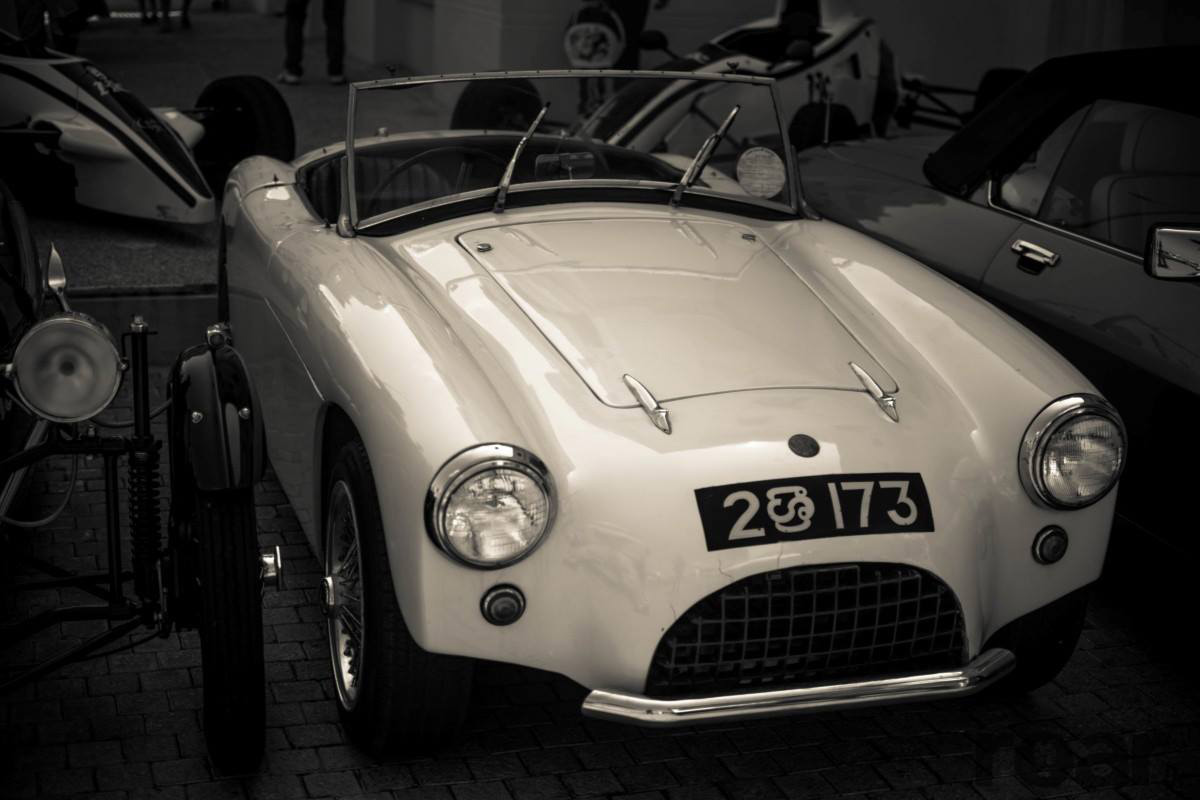
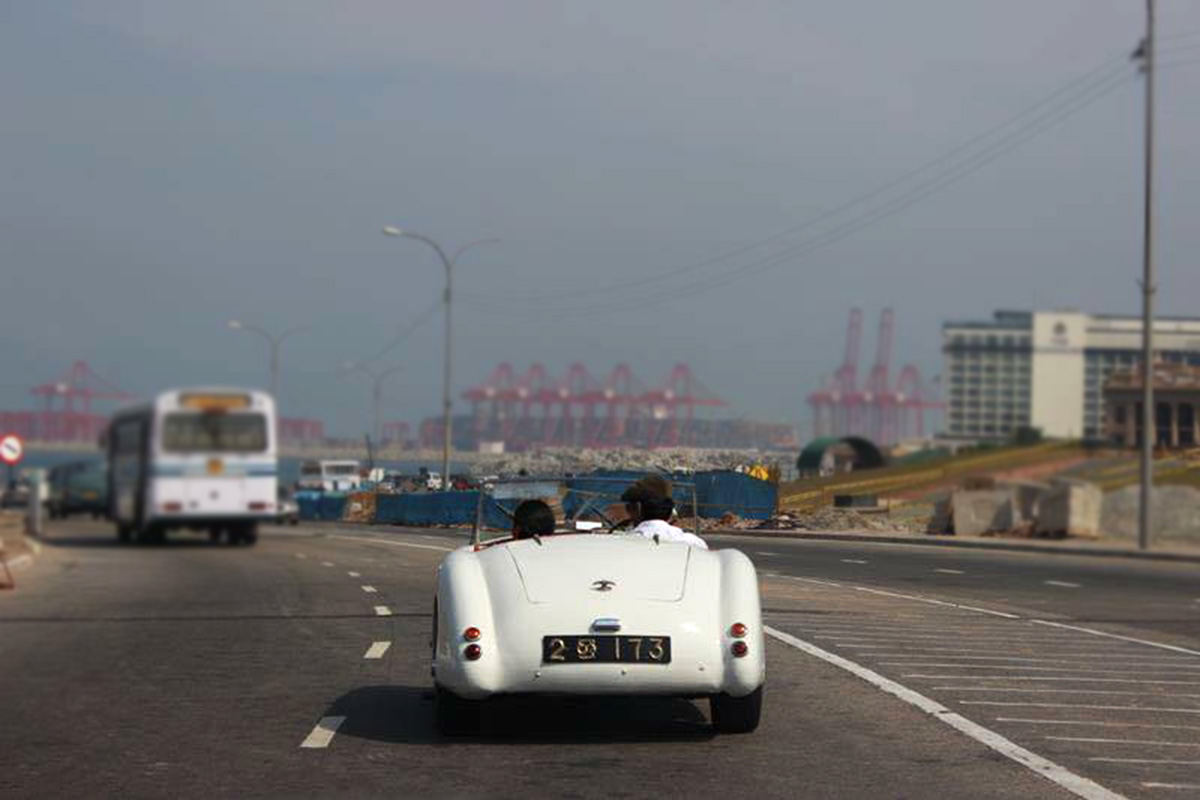
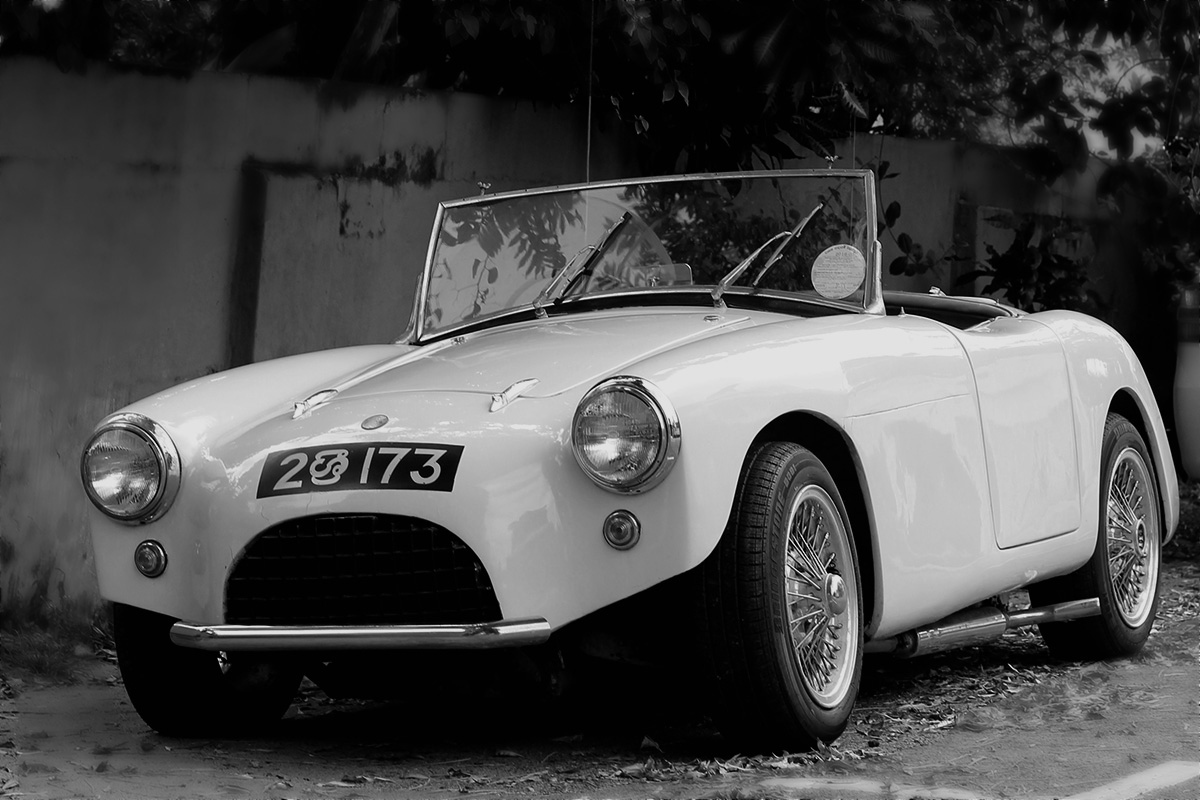
Professor Earle De Fonseka:
Kalakeerthi Earle De Fonseka, is to date better remembered as the black-bowed figure on the conductor’s rostrum than as a car enthusiast, or a lecturer to hundreds of medical students. He was the second principal conductor of the Symphony Orchestra of Sri Lanka, a position he held with dedication and distinction for the greater part of his life. He died in the year 2000, and left behind his property for the Symphony Orchestra of Sri Lanka, to promote and sustain the music he loved. Musical evenings and concerts are still organized in his memory by the Symphony Orchestra.
A complete appreciation of Professor Earle and his work could be found in the below article.
https://defonseka.com/front-page/people/earle-de-fonseka/
Family tree:
https://defonseka.com/front-page/family/ft_james-fretz/
References:
(1) Facebook posts on: Ceylon Then – Sri Lanka Now
(2) Wikipedia: https://en.wikipedia.org/wiki/Turner_Sports_Cars
(3) Turner Sports Car Registry: http://www.turnersportscars.co.uk/
(4) Photographs, documentation and information shared by Naresha Supramanium.

